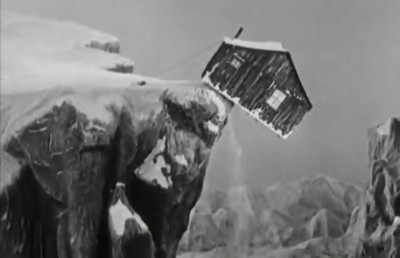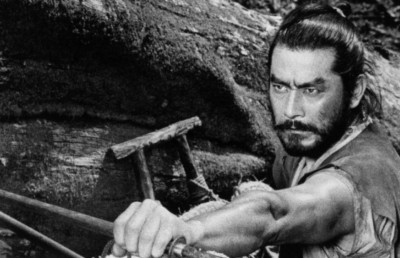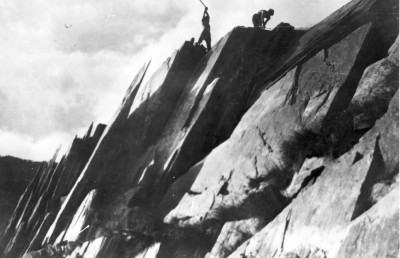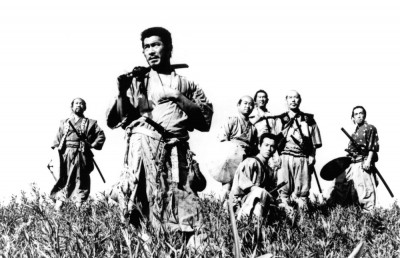The British Silent Horror Film and the First World War
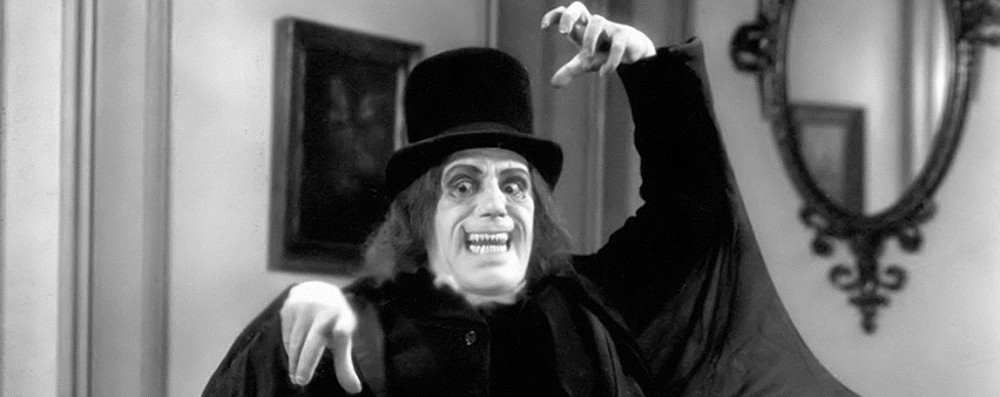
Scholars have suggested that horror films can reflect issues raised in society as a result of war or conflict. [1] Siegfried Kracauer argued that the German Expressionist movement resulted from a German Society reeling from the economic and psychological effects of losing the First World War, [2] while David J Skaal has argued that the 1920s films which came from the collaboration of Lon Chaney and Tod Browning speak of the impotent rage of the mutilated war veterans who were being assimilated back into all societies after 1918. [3] In The Penalty (1920), Chaney plays a man whose legs are amputated by mistake; in The Unknown (1927) he plays a thief posing as an armless knife thrower who amputates his arms for real.

Lon Chaney in London After Midnight
If the First World War, as Skaal and Kracauer argue, gave rise to a horror tradition in the cinemas of America and Germany, the purpose of this article is to consider whether a similar tradition can be identified in silent British cinema, and to examine whether it too can be related to the First World War. Little has been done to identify a horror tradition in British silent cinema. The book British Horror Cinema contains a filmography of sound horror films only, [4] while Gifford, who created his own generic categories, identifies only a couple of silent films as horror films. [5] Phil Hardy lists only one British film in the silent section of his horror encyclopaedia, Hepworth’s The Basilisk. [6] In part this is due to the difficulty of attributing films to the horror genre before it existed. Neither the Chaney nor German Expressionist films were conceived by their makers as part of a horror film genre, since “the horror film was established in the American cinema of the 1930s.” [7] All silent horror films must be so labelled retrospectively. Skaal adopted the Chaney melodramas for the horror genre because of their emphasis on the grotesque, and German Expressionism is often considered in discussions of horror owing to its emphasis upon distortion and madness, and its influential visual style. [8] It is therefore necessary to try and identify a theme within British silent films which can be attributed to the horror genre. This is problematic due to the lack of available resources. British silent cinema is hard to see and only a fraction of the films survive. This makes it necessary to rely upon paper sources such as the reviews in the Bioscope and the Kine Weekly.
These reviews however provide extensive plot descriptions, particularly from around 1913 onwards, and using them threads of a silent horror tradition can be found. In its review of The Other Person (1921), a tale in which a man is possessed by a vengeful spirit, the Kine Weekly refers to the film as part of “the Spook era”, which it describes as following on from “the wild west era and the eternal triangle era”, clearly indicating that it regards the spook era as a developing genre. [9] The iconography of the spook, spirit or ghost is certainly attributable to the horror genre, given the central place of the ghost or spirit in Todorov’s study of the fantastic, a key theory in horror film studies. [10] Furthermore, as a deliberate attempt to revive production in 1911, British silent cinema turned to other mediums for its inspiration, notably literature. Alongside adaptations of Shakespeare and Dickens this literary plundering also embraced the literature of the gothic. Tracing the gothic threads in British cinema, J. Rigby has produced the only substantial list of British silent horror films based upon their relation to gothic literature. [11] Taking the iconography of the spook or spirit and Rigby’s gothic titles as a starting point, it is possible to trace two narrative themes that can be identified as establishing a British silent horror genre.
Both revolve around the return of the spirit and both derive from Nineteenth Century spiritualism. Spiritualism as a religious movement began in the USA in the mid-Nineteeth Century and quickly became fashionable in Britain. The spiritualist belief system, based upon a series of Principals, holds that the soul continues after death and that those souls in the spirit world desire to communicate with the living, traditionally done through gifted individuals known as mediums. In the Nineteeth century the movement, which was largely unstructured and informal, was a curious mixture of religion and parlour game, followed by many with sincere conviction, while enjoyed by many as a daring evening’s entertainment. In Britain spiritualism was linked to cinema from the beginning. Ghosts and the return of the dead are the subject matter of some early trick films in Britain. There were strong links with spiritualism and early cinema. Pioneer G.A Smith was a committed spiritualist, to the extent of being used as a case study in telepathy for the Society of Psychic Research, and made a number of films that use trick effects to portray supernatural phenomena, including Photographing a Ghost (1897). [12] At the time the idea of film as an aspect of the uncanny was being openly debated by notable writers and spiritualists like W.T Stead, and even Gorky’s famous response to seeing cinema for the first time referred to “curses” and “ghosts.” [13] Given that cinema naturally drew upon the successes of the early period, it is not surprising that ghosts appear in later British films, offering a continued opportunity, within a narrative setting, for filmmakers to demonstrate the cinemas ability for trickery

One theme deals with traditional Christian issues, the other, discussed first, appears as mysticism from a far off culture invading the west as an exotic Other. Most often, but not always, this Other represents either Ancient Egypt or the Mummy. Georges Méliès was one of the first to demonstrate the alignment of the mysteries of Ancient Egypt and the cinemas ability for trick effects in Cleopatre, or The Robbing of Cleopatra’s Tomb (1899). Like Britain in the Nineteenth Century, France had a cultural fascination with Ancient Egypt, derived in part from Napoleon’s successful plundering of Egypt in the early 1800s. Méliès’ story is set in Ancient Egypt, and shows two men robbing the tomb, pulling out the mummy of Cleopatra, and burning it. From the flames Cleopatra then steps, alive. [14]
The conventions of Egyptian myths leading directly to the Universal Mummy series are identifiable here, principally the fascination with burial rights and with the mystical belief in the rebirth of these ancient mummies, uncannily preserved in the likeness of the person for many centuries. The 1880s and 1890s had seen an unprecedented interest in all things Egyptian in Europe but especially in Britain. To the Victorians, ancient Egypt was a long dead civilisation still there to be seen, and at the same time something with longevity that could be stolen and subsumed. An Egyptian relic in the British Museum became a historic artefact for Britain, just as the plaster copies of the Collosi of Memnon on show at the Great Exhibition in 1851 served to package the history of Egypt as part of the British Empire.
Archaeology in ancient Egypt fuelled the Victorian passion for the scientific study and cataloguing of other cultures while appropriating and “collecting” them as part of the Empire. But the rise in interest in science set forth a great religious anxiety, which Darwin turned into a full blown panic. Science’s ability to explain that which was mysterious jeopardised the position of God. This increased threat of secularisation fuelled an alternative interest in the spiritual, the mythical and the uncanny, as people looked to secular spiritualism in an attempt to rationalise religion. Many late nineteenth century spiritualists were intellectuals as yet unable to embrace atheism and seeking alternatives to God. The mysterious legends and longevity of ancient Egypt, were a way to explore this secular spirit world, first in literature, and then in film.
The print of Robert Paul’s release The Haunted Curiosity Shop (Booth, 1901), held in the bfi’s National Film and Television Archive, includes the image of a mummy which turns into a skeleton. This is a trick film like Méliès’ Cleopatre. The transformation was supposedly inspired by Theophile Gautier’s 1840 story, Le Pied de Momie, in which a collector is so haunted by the mummified foot of an Egyptian princess, that he dreams she comes back to life to claim her foot and him in marriage. The idea of the ancient reaching out into the present for love or revenge, aided by the uncanny resilience of an Egyptian artefact, became a common theme in the British silent horror film, especially after the publication of Bram Stoker’s Jewel of the Seven Stars (1912). The Wraith of the Tomb (Charles Calvert, 1915) drew directly on the heritage of Gautier and Stoker in the tale of a mummy’s hand stolen from a tomb and taken to Britain. The hand is cursed by the spirit of the owner from whom it was stolen. The thief, an eminent professor, dies under mysterious circumstances while giving a lecture and the hand passes to his son. At this point the story veers towards a traditional melodramatic love triangle. The son resolves to return the hand, while the rival in love for his sweetheart determines to stop him. Eventually the rival steals the hand, and is killed by it. [15] Richard Marsh’s 1897 gothic story The Beetle was adapted by Will Barker in 1919. The film tells the story of the soul of an Egyptian Princess transformed into a creature without form or gender who could possess the spirit of the weak. Twenty years previously, on a visit to Egypt, MP Paul Lessingham had been drugged (or hypnotised) by a mysterious women, a priestess/child of Isis, who captures him and uses him as a sex slave, while forcing him to watch human sacrifices. Regaining his senses, he strangles the priestess, who turns into a beetle. She returns twenty years later as a spirit of Isis to avenge the crime wrought against her.
The fascination with the spirit appears in these films in an anxious form, the spirit being an avenging force. It takes its revenge against those who do not believe in the spiritual, life after death or the power of curses, but rather sees relics and corpses which can be catalogued, dissected and analysed. Many mummies were destroyed in the 19th Century when it became fashionable to unwrap them for public entertainment. Between 1820 and 1852 for example, Thomas Pettigrew, author of the History of the Egyptian Mummy (1834) conducted regular sold out public lectures which would climax with the unravelling of a mummy. These curse narratives therefore demonstrate a national guilt, in part at simply the notion of grave robbing, but more deeply with the concentration on the scientific and the threat which that posed to the immortal life of religious faith. Narratives such as these re-affirm the spiritual life in the secular context of an exotic Other. This exotic Other that is brought into the west and releases uncanny forces is almost invariably female, which in turn represents the perceived Victorian threat of the dark and unrepressed female sexuality of the exotic cultures which the west explored; the flip side of the fascination with dark sexuality led to the representation of dark skinned women in Victorian and Edwardian pornography. Finally these are films as much about the threat of female desire as about the fear of having killed God.
The contrasting theme of the British silent horror film is the religious spirit and the soul. Two films on this subject were made in the run up to the war by Cecil Hepworth. Dr Trimball’s Verdict (1913) retained the revenge theme of the exotic Other but updated it, making the avenger a contemporary figure rather than an ancient one. The film involves a love triangle, in which both Dr Trimball and Dick are in love with Alice, who consents to marry Dick. Dr Trimball creates a plan to get rid of Dick, claiming a sore on his tongue is a sign of his own impending death from cancer. Dick, devastated, kills himself and Dr Trimball then marries Alice. Years later he buys a skeleton for medical purposes and is horrified to see the skeleton come back to life as the body of his friend, come to take revenge. Running about 15 minutes, this draws on the traditions of the trick film since the story is designed to display the spectacle of the skeleton’s gradual embodiment. Like The Wraith of the Tomb, this is about guilt and retribution from beyond the grave but the difference here is that the deceased is not an ancient figure whose remains have been disturbed by scientists, but a very human figure deceived by a crime against Christian morality. Indeed the transformation may be in the mind of Dr Trimball and the skeleton is not that of the man he betrayed, but a manifestation of his own guilty soul. This is suggested by the review which notes that “the terrible sight, working on a brain which is already half unhinged by remorse, causes a strain which is more than the terrified man can bear.” [16] In The Basilisk, (1914), a mystic with occult powers controls the mind of Alma Taylor, trying to force her to kill her fiancée. The fiancée is finally saved when a snake kills the evil mystic and the spell is broken. The basilisk is an ancient myth, and here also echoes the plot of The Beetle, with its emphasis on the control of the soul and its Egyptian monster. In The Basilisk however the ancient spirit is embodied very much by a contemporary mystic. The mystic “controls” the ancient power, rather than the power working through the mystic, and the machinations of the mystic are not related to some perceived wrong against this ancient spirit. The villain is very human and motivated by human greed and desire, rather than an avenger from the past. [17]
These two films demonstrate the highlighting of issues of Christian morality within the British silent horror film, a theme which would expand as the War began. From the middle of the war we can begin to see a reactionary shift away from the mysticism of the exotic Other and back towards traditional Christian representations of the soul and the afterlife. Furthermore, the spirit involved is almost invariably male, as opposed the avenging female spirit of Egypt. The narrative moves away from the exotic Other in temporal, spatial and gender terms and returns to the present, to the familiar, and to the masculine.
The American director of Traffic in Souls, George Loane Tucker, came to the UK in 1913, and in 1916 produced Man Without a Soul, written by Kenelm Foss. The film draws heavily on the Frankenstein myth for its inspiration, but uses it to specifically deal with issues of religion and agnosticism in the face of loss. The agnostic professor Gedge is experimenting with creating life and trying to convert his assistant Stephen, son of the local vicar. When Stephen dies, the vicar accepts this through his faith, while Gedge cannot, re-animates the boy who, without a soul, proceeds to wreak havoc until Gedge appeals to God to destroy his work. This reactionary tale asserted once more the value of faith in dealing with loss. It did so in the midst of a religious crisis which rose from the wartime loss of loved ones, as many sought comfort elsewhere, particularly in spiritualism. The war saw a dramatic increase in interest in spiritualism among the public, as those left behind tried to make sense of their losses and tried to contact fallen loved ones. [18] This post-war spiritualist increase has been linked to a reaction against the church, which was seen to be incapable by some of offering comfort to those left bereaved by such senseless carnage. In these films however we can witness a shift towards religious spiritualism which is inextricably linked to the moral teachings of the church. The dangers of secular spiritualism were specifically addressed in Bernard Doxat-Pratt’s The Other Person (1921). Squire Andrew Grain, a spiritualist, is at odds with the local vicar, who sermonises against him. In a fury, the squire tells his heir that he must break off with the vicar’s daughter or be disinherited. The Squire turns up murdered and his heir is arrested, but a séance proves that the Squire’s dead brother, murdered years before, has possessed the local spiritualist and had him kill the Squire. Although the Squire is an evil man, without the concept of forgiveness and the rest of heaven the spiritualism here invokes a cycle of death turning in upon itself.
These films are cautionary tales which treat the return of the spirit as a dark story, and this reflects also their fundamentally Christian nature. The realm of the spirit was no longer in the realm of the exotic Other and ancient culture, but instead it came home placing the spirit within the everyday world, and re-linking it with the Christian idea of the immortal soul. Subsequent films did likewise. In 1917 Alexander Butler adapted Mari Corelli’s 1895 novel, The Sorrows of Satan, a Faustian tale of a young student spending an inheritance under the auspices of Satan himself. Finally he turns upon his friend when the wife he has purchased declares her love for the mysterious stranger and commits suicide. In 1916 Will Barker released a version of The Picture of Dorian Gray, in which Gray is given a dubious immortality as his soul is enshrined in the portrait, which grows hideous with sin as Grey remains untouched. Although ostensibly about aesthetics and art, Wilde’s story is unusually moral in tone for him, exploring sin as a Christian concept which leads to dissolution. Gray dies at a point of understanding and redemption, unwittingly committing suicide by repenting and destroying the evidence of his depraved life.
In Christianity, the belief that death is not the end and that the soul goes on, is a cornerstone of faith, but to attempt to contact the soul, to seek it out, is sinful. On the other hand this is something which is encouraged in spiritualism. British silent horror cinema is a series of ghost stories. As the War approached and begun the ghost ceased to be a vengeful spirit from the past but became a part of contemporary life, as did death during the War. Following this move there was a shift away from stories suggesting the dead would return unquiet and vengeful, but rather that the spirit world was close, and was a place of comfort governed by Christian concepts of right and wrong. Death and life after death became something projected forward into the future, where it implicitly constituted hope for those bereaved, not projected into the present from the past as a threat. British silent horror films reaffirm, in the face of the death of God and the death of millions, that Death and life after death becomes something projected forward into the future, where it implicitly constitutes hope for those bereaved, not projected into the present from the past as a threat.
Endnotes
1 For example Robin Wood’s influential analysis of the cycle of horror films produced in America in relation to Vietnam. See Robin Wood and Richard Lippe eds, American Nightmare: Essays on the Horror Film (Toronto Festival of Festivals, 1979).
2 Siegfried Kracauer, From Caligari to Hitler: A Psychological History of The German Film (Princeton: Princeton University Press, 1974)
3 David J. Skaal, The Monster Show: A Cultural History of Horror (London: Plexus, 1994), 65-6.
4 L.S Smith, “Filmography of British Horror Films of the Sound Era” in Eds Steve Chibnall and Julian Petley, British Horror Cinema (London: Routledge, 2002), 196-238.
5 Dennis Gifford, The British Film Catalogue Volume 1: Fiction Film 1895-1994, 3rd Edition (London: Fitzroy Dearborn, 2001)
6 Ed Phil Hardy, The Aurum Film Encyclopaedia: Horror (London, Aurum Press, 1985), 18
7 This task becomes easier after the 1930s since by then the genre, especially in Britain, had been officially labelled. Ian Conrich’s study of British horror films of the 1930s identifies a selection of films as horror films because they were categorised as H (for horrific) by the BBFC alongside Dracula and Frankenstein, and this places them de facto into the horror genre. Ian Conrich, “Horrific Films and the 1930s British Cinema” in eds Steve Chibnall and Julian Petley, British Horror Cinema (London: Routledge, 2002), 58-70
8 See Mark Jancovich, Horror (London, B.T. Batsford Ltd, 1992), 53; Lane Roth, “Film, Society and Ideas: Nosferatu and Horror of Dracula” in ed Barry Keith Grant, Planks of Reason: Essays on the Horror Film (Lanham: Scarecrow Press Inc, 1996), 147-148
9 Kinematograph and Lantern Weekly, 21 April 1921, 53
10 Tzvetan Todorov, The Fantastic: A Structural Approach to a Literary Genre, translated by Richard Howard (Cornell University 1980), 24-41.
11 J. Rigby, English Gothic: A Century of Horror Cinema (London, Reynolds and Hearn, 2000), 10-15.
12 Stacey Abbott “Spectral Vampires: Nosferatu in the Light of New Technology”, ed Steffen Hantke, Horror Film: Creating and Marketing Fear (Jackson: University of Mississippi Press, 2004), 10-13.
13 Maxim Gorky, reprinted in Eds Colin Harding and Simon Popple, In the Kingdom of Shadows: A Companion to Early Cinema (London: Cygnus Arts, 1996), 5
14 Story description from Complete Catalogue of Genuine and Original Star Films, 1903
15 Review in Bioscope, 7 October 1915, 105.
16 Review in Bioscope, supplement 14 August 1913, xv
17 Review in Bioscope 10 September 1914, 1007
18 See “Spiritualism and the ‘Lost Generation’ in Jay Winter, Sites of Memory, Sites of Mourning (Cambridge, Cambridge University Press, 1995), 54-77 and “Spiritualism after the Great War” in Jenny Hazelgrove, Spiritualism and British Society between the Wars (Manchester, Manchester University Press, 2000), 13-41.


